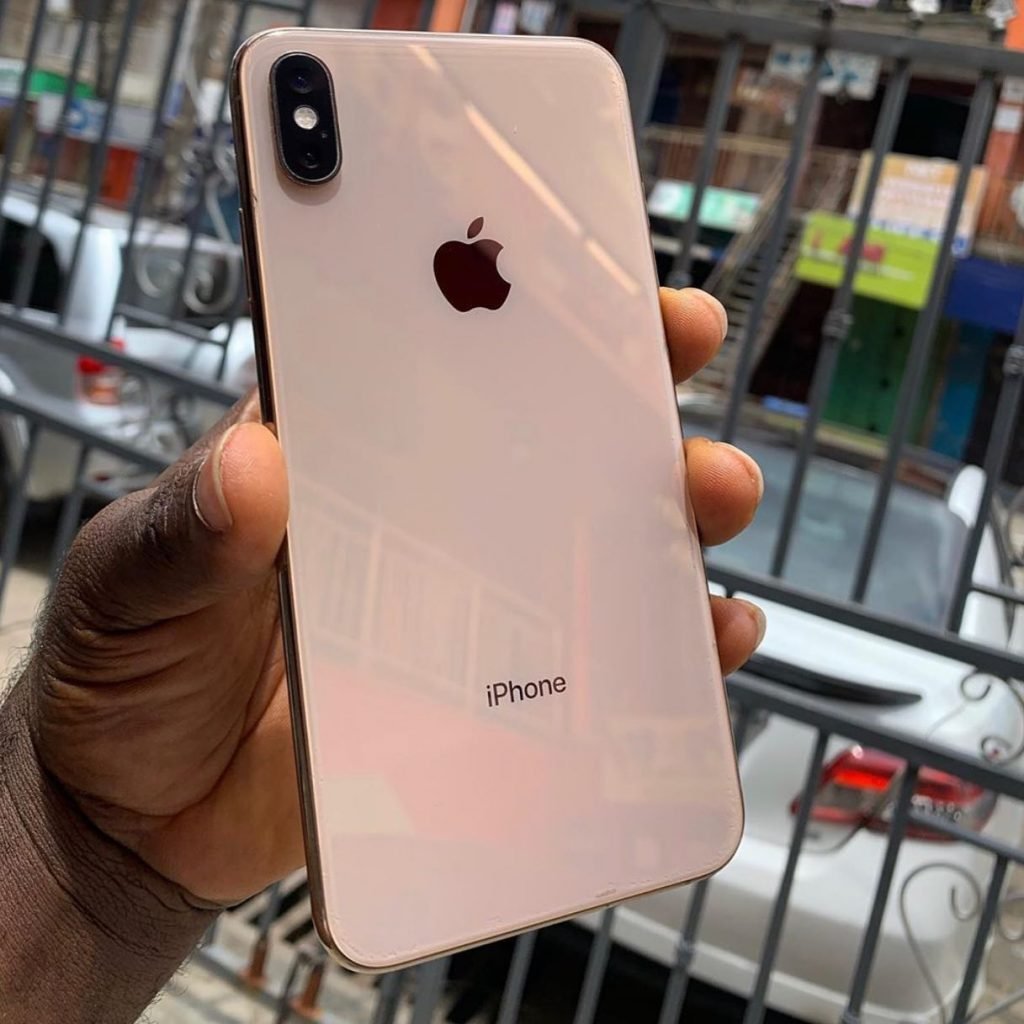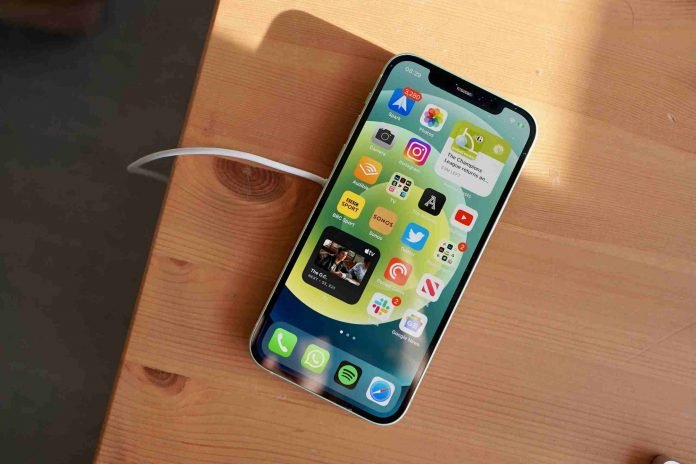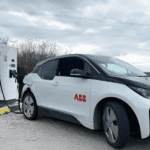Last Updated on March 17, 2024 by Umer Malik
Table of Contents
Introduction to iPhone 12 Pro and iPhone XS
The iPhone 12 Pro and iPhone XS are both high-end smartphones from Apple. The iPhone XS was released in 2018, while the iPhone 12 Pro was released in 2020. The A14 Bionic chip powers Apple’s most powerful processor. It also boasts a triple-lens camera system, which includes a 12-megapixel ultra-wide, comprehensive, and telephoto lens. It also features a dual-lens camera system with a 12-megapixel wide and telephoto lens. The device supports up to 4G LTE connectivity. Keep reading about the difference between iphone 12 pro and iphone xs in this content.

Design and Display
Design and Display are two critical aspects of a smartphone that contribute to its overall aesthetic appeal and functionality. This section will discuss the physical design, dimensions, Display size, resolution, and features of the iPhone 12 Pro and iPhone XS.
Display size, resolution, and features
The Display is one of the most important aspects of a smartphone, as it is the primary way users interact with their device. Compared with the iPhone XS, the iPhone 12 Pro has a smaller 5.8-inch Super Retina OLED display with a 2436 x 1125 pixels resolution. Both shows have True Tone and HDR support, enhancing overall color accuracy and contrast.
Notable design differences
One of the most notable design differences between them is the introduction of Ceramic Shield technology in the iPhone 12 Pro. This technology adds a ceramic layer to the glass display, providing four times better drop performance than previous iPhone models. Additionally, the iPhone 12 Pro has squared-off edges, which gives it a more modern and sleek look compared to the rounded design of the iPhone XS.
Another design difference between the two devices is the placement of the rear camera system. The three lenses are arranged triangular, whereas the iPhone XS has a dual-lens camera system with the lenses positioned vertically. Additionally, the iPhone 12 Pro has a LiDAR scanner, which is not available in the iPhone XS. The LiDAR scanner provides improved depth perception, making taking better portraits and AR experiences easier.
Camera
The camera is one of the most important aspects of a smartphone for many users. The iPhone 12 Pro and iPhone XS have advanced camera systems offering a range of features and improvements.
Rear camera system specs and features
The iPhone 12 Pro features a triple-lens camera system, which includes a 12-megapixel ultra-wide, comprehensive, and telephoto lens. The ultra-wide lens has an aperture of f/2.4, while the wide and telephoto lenses have an aperture of f/1.6. The device also features 2x optical zoom in and 2x optical zoom out, and 10x digital zoom. The iPhone XS has a dual-lens camera system, which includes a 12-megapixel wide and telephoto lens. The wide lens has an aperture of f/1.8, while the telephoto lens has an aperture of f/2.4. The device also features 2x optical zoom and 10x digital zoom. The camera system also has OIS to help reduce blurring.
Front-facing camera specs and features
The iPhone 12 Pro and XS have a 12-megapixel front-facing camera with an aperture of f/2.2. The front-facing camera on both devices also supports Portrait mode and Night mode, allowing better quality selfies in low-light conditions. Additionally, the front-facing camera on the iPhone 12 Pro supports Dolby Vision HDR video recording, which is unavailable in the iPhone XS.
Camera differences and improvements
One of the main differences between the camera systems of the iPhone 12 Pro and iPhone XS is the addition of a third lens in the iPhone 12 Pro. The ultra-wide lens allows users to capture more of the surrounding environment in their photos, making it ideal for landscape and architectural photography. The iPhone XS also lacks the LiDAR scanner found in the iPhone 12 Pro, which improves autofocus and enables new AR experiences. The iPhone 12 Pro also features Night mode portraits, unavailable in the iPhone XS. This allows for better low-light portrait photography with more detail and less noise.
Performance and Hardware
The performance and hardware of a smartphone are crucial factors for many users. The iPhone 12 Pro and iPhone XS have powerful hardware components contributing to their overall performance.
Processor and chipset specifications
The iPhone 12 Pro is powered by Apple’s A14 Bionic chip, which is currently one of the most advanced processors in the market. It is a 5-nanometer chip that features a six-core CPU and a four-core GPU. The A14 Bionic chip is also equipped with a 16-core Neural Engine, which helps to improve machine learning performance. On the other hand, the iPhone XS is powered by Apple’s A12 Bionic chip, a 7-nanometer chip. It features a six-core CPU, a four-core GPU, and an eight-core Neural Engine.
RAM and storage options
The iPhone 12 Pro comes with 6GB of RAM and is available in three storage options: 128GB, 256GB, and 512 GB. On the other hand, the iPhone XS comes with 4GB of RAM and is available in two storage options: 64GB and 256 GB.
Battery life and charging capabilities
The iPhone 12 Pro has a slightly larger battery capacity than the iPhone XS, with a 2,815mAh battery compared to the 2,658mAh battery in the iPhone XS. Both devices support fast charging and can charge up to 50% in 30 minutes with a compatible charger. The iPhone 12 Pro also introduces MagSafe technology, allowing magnetic wireless charging and better alignment with compatible accessories. On the other hand, the iPhone XS uses traditional Qi wireless charging.
In terms of overall performance, the iPhone 12 Pro is expected to outperform the iPhone XS due to its more advanced processor and higher amount of RAM. The A14 Bionic chip also allows for improved computational photography and faster neural processing, which can enhance the overall user experience. However, it is essential to note that the iPhone XS is still a reliable and capable device and may be a more affordable option for users who do not require the latest and most advanced hardware. Ultimately, the choice between the two devices will depend on individual needs and preferences.
Software and User Interface
A smartphone’s software and user interface significantly affect the overall user experience. The iPhone 12 Pro and iPhone XS run on Apple’s proprietary operating system, iOS.

Operating system and version
The iPhone 12 Pro was released with iOS 14, which includes several new features and enhancements such as App Library, Widgets, and improved privacy settings. It also can use App Clips, which are small portions of an app that can be used without installing the entire app. The iPhone XS shipped initially with iOS 12 but can be updated to the latest iOS 14. Both devices receive regular updates from Apple, which include bug fixes, security enhancements, and new features.
Notable software features and enhancements
One of the most notable software features of the iPhone 12 Pro is the introduction of ProRAW, which allows users to capture images in a RAW format and gives them more control over the editing process. The iPhone XS does not have this feature. Both devices include Face ID, allowing for secure and convenient facial recognition authentication.
- The iPhone 12 Pro has an updated version of Face ID, which is faster and more accurate than the iPhone XS performance.
- The iPhone 12 Pro includes new camera features, such as Night mode portraits and improved performance. It also can record Dolby Vision HDR video, which is unavailable on the iPhone XS.
- Regarding the user interface, both devices share a similar design, with a home screen containing app icons and a dock at the bottom of the screen. However, the iPhone 12 Pro introduces new widgets that can be added to the home screen, which allows for more customization and convenience.
Connectivity and Wireless Technology
Connectivity and wireless technology are essential factors to consider when choosing a smartphone. The iPhone 12 Pro and iPhone XS offer a range of connectivity and wireless options to meet users’ needs.
Cellular connectivity and network support
The iPhone 12 Pro and iPhone XS support various cellular connectivity options, including 4G LTE, 5G, and Gigabit-class LTE. The iPhone 12 Pro also supports more 5G bands, which means it can connect to more 5G networks worldwide. However, the availability of 5G varies depending on the user’s location and network provider.
Wi-Fi and Bluetooth capabilities
Both devices support Wi-Fi 6, which provides faster speeds and improved performance compared to previous Wi-Fi standards. The iPhone 12 Pro also includes support for 802.11ax, which allows for faster Wi-Fi speeds and better performance in crowded areas. In terms of Bluetooth, both devices support Bluetooth 5.0, which provides a more robust and reliable connection to other Bluetooth devices.
Other notable wireless technologies
The iPhone 12 Pro and iPhone XS include NFC (Near Field Communication), allowing contactless payments and sharing of files and data between devices. The iPhone 12 Pro also has a new U1 chip, which uses Ultra-Wideband technology to provide spatial awareness and improved location accuracy. In wired connectivity, both devices include a Lightning port for charging and data transfer. However, the iPhone 12 Pro does not have a headphone jack and instead relies on wireless or Lightning-connected headphones.
Price and Availability
When purchasing a smartphone, price and availability are essential factors to consider. The iPhone 12 Pro and iPhone XS are both high-end devices, but there are differences in their pricing and availability.
Retail prices and availability of both models
The iPhone 12 Pro was released in October 2020 and is available from Apple and other retailers. The retail price starts at $999 for the base model with 128GB of storage but can go up to $1,399 for the model with 1TB of storage. The iPhone XS was released in September 2018 and is no longer available from Apple but can still be purchased from third-party retailers. The retail price for the iPhone XS started at $999 for the base model with 64GB of storage but went up to $1,349 for the model with 512GB of storage.
Comparison of pricing and value for money
While the iPhone 12 Pro and iPhone XS are high-end devices, the iPhone 12 Pro offers more value for money regarding features and performance. The iPhone 12 Pro includes a faster processor, improved camera system, larger Display, and more advanced connectivity options than the iPhone XS. Additionally, the iPhone 12 Pro offers more extended software support and updates from Apple, which can provide a longer lifespan for the device.
Comparison Table
| Features | iPhone 12 Pro | iPhone XS |
| Design and Dimensions | Larger, flat-edge design Smaller | curved-edge design |
| Display | 6.1-inch Super Retina XDR display | 5.8-inch Super Retina HD display |
| Rear Camera | Triple 12MP Ultra Wide, Wide, and Telephoto lenses with LiDAR scanner | Dual 12MP Wide and Telephoto lenses |
| Front Camera | 12MP TrueDepth camera with Night mode | 7MP TrueDepth camera with Portrait mode |
| Processor and Chipset | A14 Bionic chip with Neural Engine | A12 Bionic chip with Neural Engine |
| RAM and Storage | 6GB RAM, 128GB/256GB/512GB/1TB storage | 4GB RAM, 64GB/256GB/512GB storage |
| Battery Life | Up to 17 hours of video playback | Up to 14 hours of video playback |
Conclusion
In conclusion, the iPhone 12 Pro and iPhone XS are high-end devices with distinct designs, performance, cameras, software, connectivity, and price differences. The iPhone 12 Pro is the newer and more advanced model with a larger display, improved camera system, faster processor, more advanced connectivity options, and more extended software support from Apple. On the other hand, the iPhone XS may still provide sufficient performance for users who do not require the latest features but may have limited availability and stock from third-party retailers. For users who need the newest technology and advanced features, the iPhone 12 Pro is the recommended option. Its improved performance, camera system, and software support make it a valuable investment.
Apart from that, if you want to know about A comparison of prices of iPhone models in different countries, then please visit our Technology category.
FAQs
The iPhone 12 Pro offers a larger display, improved camera system, faster processor, more advanced connectivity options, and more extended software support from Apple compared to the iPhone XS.
While the iPhone XS is no longer available from Apple, it can still be purchased from third-party retailers.
The retail price for the iPhone 12 Pro starts at $999 for the base model with 128GB of storage but can go up to $1,399 for the model with 1TB of storage.
The retail price for the iPhone XS started at $999 for the base model with 64GB of storage but went up to $1,349 for the model with 512GB of storage.
Yes, the camera system on the iPhone 12 Pro is more advanced compared to the iPhone XS, with additional features such as LiDAR scanning and Night mode portrait.
The iPhone 12 Pro offers better battery life than the iPhone XS, with up to 17 hours of video playback compared to 14 hours on the iPhone XS.
















